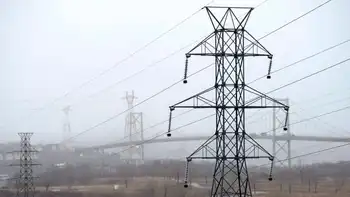Avoiding a blackout
By Investor's Business Daily
CSA Z463 Electrical Maintenance -
Our customized live online or in‑person group training can be delivered to your staff at your location.

- Live Online
- 6 hours Instructor-led
- Group Training Available
In less than 48 hours, the Aug. 14, 2003, blackout, the largest power outage in U.S. history, ran up as much as $12 billion in economic losses. Life went dark for roughly 60 million Americans and Canadians, many of whom also lost their water supplies, as well.
At least 11 died from various causes linked to the loss of electricity. Looting, fires and general civic unrest plagued the big cities affected by the blackout.
A once-in-a-lifetime event, an anomaly that shouldn't require a second thought? Not necessarily.
"The U.S. faces potentially crippling electricity brownouts and blackouts beginning in the summer of 2009, which may cost tens of billions of dollars and threaten lives," says the NextGen Energy Council's report, "Lights Out In 2009?"
If the nation is to avoid a repeat of the 2003 blackout, its power supply desperately needs to be boosted through new construction of nuclear-, coal- and gas-fired plants. NextGen estimates that 120 gigawatts of new generation, enough to power as many as 48 million homes, will be needed to provide a 15% reserve margin. That's the rough minimum needed to ensure that the system is reliable.
But that's only half the fix. Additional electricity is worthless if it can't be distributed to users. NextGen estimates the U.S. needs more than 14,500 miles — that's New York to Los Angeles and back three times — of transmission lines by 2016 to relieve congestion that will inevitably cause power outages if the issue isn't addressed.
The improvements need to begin immediately. Power demand is expected to grow by 18% over the next 10 years while estimates indicate that power output will increase only 8% through 2016.
In a fully rational world where markets are left to themselves, the work would get done. The capital is available and the incentives are in place.
But our world is filled with irrational actors who foolishly — and predictably — resist the changes that are obviously needed to move forward by erecting difficult regulatory and policy hurdles. The "development of numerous coal plants," for instance, has been canceled or deferred in recent years, NextGen says, because of environmental rules.
"The single biggest threat to system reliability," says the NextGen report, "is opposition from well-funded environmental groups that oppose and file lawsuits against virtually every new electricity project proposed."
Report authors say at least $300 billion will be needed to update the system. But as long as policymakers let themselves be bullied and bought off by environmental groups, it might as well be $300 trillion.











